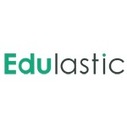
Link to my magazine: Learning from Hal 9000
Curation
I am new to curation and curation tools so this is both exciting and challenging. I have chosen Scoop.it for my final project because it is intiutive to use and I like the layout templates. I have experimented with Symboloo which is a great way to organize websites. It is very visual which helps my learning style. Thinking about the fire hose syndrome Syboloo helps create order by representing websites as tiles on a page which are clickable links. I am learning more about WordPress in this class and I am starting to see how posting and following others can increase my professional development opportunities. My classmates posts this week really opened my eyes to creating a system of curation by following others as well as using tools. I already follow professionals that relate to what I do on Twitter and I have discovered Filpboard as a powerful tool to choose subjects to keep informed.
Classmate’s posted on maintianing a variety of types of sources to keep a balanced view on topics as well as getting deeper into subjects and topics with more specifics and actionable information.
I continue to read national newspapers online because I have found that topics and issue which I would not necessarily looked for come up which spur my thinking in new ways. Keeping general sources of information open to discover new topics is key to my continued learning as much as focusing on relevant topics.

My Interest in AI and Education
I grew up in at a time when Hollywood and therefore to some degree, our national consciouness, was being transformed by the genius of Issac Isamov and his friend Stanley Kubrik. Isamov introduced us to smart robots in I Robot and the film 2001 made that date seem like a time of amazing wonder to us back in the 70’s; phone calls that allowed you to see the people you were talking to, in color! Small devices that allowed you to communicate at will with others from thousands of miles away and of course, smart computers. Sound familiar?
AI, Friend or Foe
In my teen years our fascination and fears which transected one another either based on which movie we saw or which article we read were hyper-focused on smart machines that, for some reason, wanted to wipe out humanity. The Hal 9000 was smart enough (almost) to outsmart his human commander Dave as they fought a life and death struggle racing to the end of the universe at the speed of light. Before Arnold Schwartzanager was “saving ” California as the Gov, he was seeking to destroy humanity as The Terminator.
The most brilliant inventions of man had gone haywire and were coming back to destroy us. We have always had a fear of our own inventions as the archetype Frankenstiens of our ingenutiy.
Smart computers are learning on their own as they have been for years but today Google’s Deep mind has been able to beat a Go champion, ignoring the predictions that Go was too intutitive for a computer to master. The future of AI is at our doorstep at a time when neuroscientists are discovering that our brain is a grid of electrical curcuits activated by stimuli to produce chemical reactions; the mystery of love and wonder explained and our uniqueness challenged.
http://www.theverge.com/2016/3/13/11184328/alphago-deepmind-go-match-4-result
Real Fears
Good teachers teach from the heart as well as the brain. In theory, computers can’t do that. However, computers don’t stay out too late with their friends either. They don’t get burned out after a few years of classroom management challenges, they don’t bring their prejudices and personal preferences to their classrooms. Computers could potentially differentiate through data analysis of individual students in a constant state of formative assessment talioring teaching to learning styles and indiviual needs based on fast data crunching that could include test scores, pulse rates, eye movement and brain focus, all without needing health benefits or a pension.
Today, the fear of smart machines isn’t that they will try to kill and destroy us. Other humans are scaring us more in that regard. What about our jobs, though? The real fear of smart tech is that they will be better than us at most of what we do to make a living.
Stephen Hawkins and Elan Musk are the most recent Casandras of mass unemployment due to the automation of everthing from fixing your car to removing your appendix. However, go to tech conferences and you will hear everyone from tech companies selling products to school districts, experts in the field and fellow teachers chant, “teachers will never be replace by machines.”
Are we sure?
This magazine will look at that assertion and explore whether it is the reflection of a deep understanding of what makes teaching valuable and necessarily a human activity or just wishful thinking that we are somehow unique compared to other professions that are predicited to disappear at about the same rate as the polar ice caps.
The FireHose
I chose to use Scoopit primarily because Dean suggested it. I used him as a reliable source to help me aggregate information about the other curation tools out there. I have used Flipboard in the past but I see that Scoopit allows you to post directly to WordPress and Twitter. It is therefore shareable and easy to use.
My brain hurts when I feel the burden of all the potential learning I could do if I were able to focus my time and energy. Thank goodness for this curated Masters Program at Wilkes/Discovery and Scoopit!











